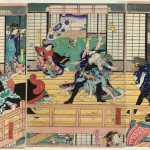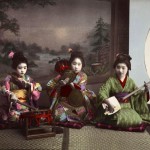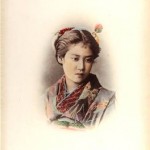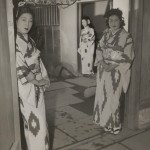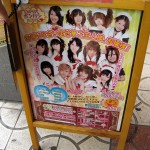History
The origin of geisha, courtesans in Edo Japan through to modern trends
Edo Pleasure Districts
Tokugawa Ieyasu rides into battle at Sekigahara Prior to the start of the 17th century Japan had been in a period of great turmoil and constant war – the Sengoku Period. During this period martial skill and warmongering become extremely important to gaining power and control over the country. Oda …
Rise of the Geisha
Three geisha play the tsuzumi, taiko and shamisen in this Meiji era postcard The Pleasure Quarters and the Tayu within were no doubt popular but over time Geisha came to be a formidable rival and would eventually overtake the Yujo (courtesans) in popularity. There were multiple reasons for this; partially …
Meiji and Modernisation
Commodore Perry and the end of Sakoku (Isolation) During the 16th Century European traders began to arrive in Japan, originally starting with a group of Portugese traders shipwrecked on their way to the Phillipines. Christianity had begun to spread with the arrival of missionaries and later would influence daimyo Sumitada …
World War II and the American Occupation
War in the Pacific 1926 marked a new Emperor and with it a new era – Showa. With the Meiji restoration having destroyed the idea of feudal loyalism and having established state education and conscription Japan began to experience it’s first flush of nationalism. The idea of Japanese superiority and …
Modern Mizu Shobai
There are those that would turn their noses up to think that the lowly hostesses and cosplay girls have anything to do with Geisha but the reality is that paid companionship is an ongoing tradition in Japan. Gone are the elaborate Tayu, the Geisha reserved for only the wealthy. Today …

